How to Merge Non-adjacent Partitions in Windows 11/10
When building a new computer, it's common to partition an HDD into multiple drives for different types of data, such as a C drive for system files, a D drive for personal files and downloads, and potentially additional drives like E or F for further organization.
Most users create four partitions on their computer, but some situations may require them to redefine the number of partitions, such as when the C drive runs out of space.
To combine an almost full partition with an idle one, or to cut off useless partitions, you can move and merge partitions. This process involves resizing the almost full partition and then merging it with the idle one, or deleting the useless partitions to free up space. You can use disk management tools to achieve this, such as the built-in Disk Management tool in Windows or the Disk Utility in macOS. These tools allow you to resize, merge, and delete partitions as needed, helping you to optimize your disk space and improve performance.
Why You Can't Merge Unallocated Space in Windows 11/10
In Windows Disk Management, the "Extend Volume" option is greyed out because the unallocated space is not contiguous to the partition you want to extend. This means that there are gaps between the unallocated space and the partition, making it impossible to extend the partition with the unallocated space. To resolve this, you need to merge the unallocated space with the partition, which can be done by creating a new partition in the unallocated space and then extending the original partition to fill the new partition. This will make the unallocated space contiguous with the original partition, allowing you to extend it using the "Extend Volume" option.
In real-life scenarios, extending a partition often requires more complex operations, such as resizing adjacent partitions or relocating data to free up unallocated space, which can be time-consuming and may involve data loss if not done correctly. A more reliable approach is to create a new partition and copy the data to the new partition, then delete the original partition and extend the new one to fill the available space. This method ensures data safety and can be more efficient than trying to resize existing partitions.
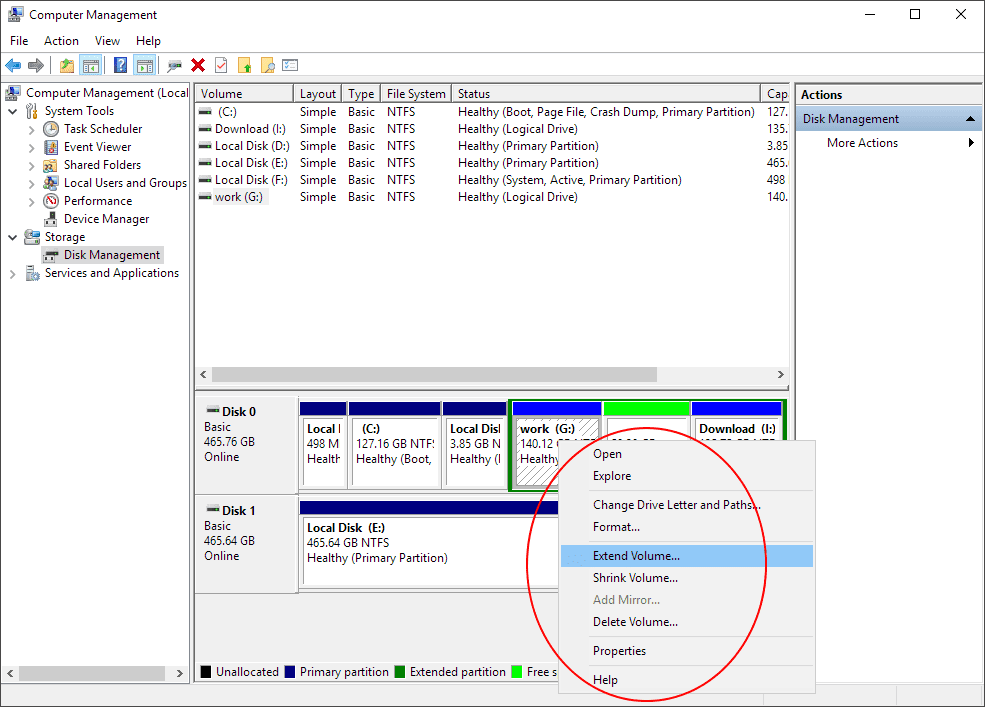
Whether the Extended Volume is available depends on whether there is an unallocated space between two non-adjacent partitions, allowing for merging of adjacent partitions but not non-adjacent ones.

2 Ways to Merge Non-adjacent Partitions in Windows 11/10
Merging unallocated space can be easily done using either Disk Management or a third-party tool like Qiling Partition Master. Both methods are straightforward and user-friendly, allowing users to choose the one that best suits their needs.
When choosing between a tool, it's essential to consider your specific needs and goals. A comparison table can help you decide which tool suits your needs the most.
| Comparison | Qiling Partition Master | Disk Management |
|---|---|---|
| Data Safety |
Merge contiguous partitions: data retains Merge non-contiguous partitions: partial data loss |
Merge contiguous/non-contiguous partitions: either case would cause a total data loss |
| Unallocated Space Location | No requirements | Placing on the right side of the target partition |
How to Extend Non-adjacent Partitions with Disk Management
In Windows Disk Management, you can format a disk, create a new simple volume, extend/shrink a volume, delete a volume, and change a drive letter and paths. However, to merge non-adjacent partitions, you need to delete one drive first, as shown in the example.
1. To get the result of C+D, you need to delete the D drive and turn it into unallocated space.
2. To delete both D and E, and then extend the C drive.
I recorded a gif picture to illustrate the process for your reference, but they're with different drive letters.
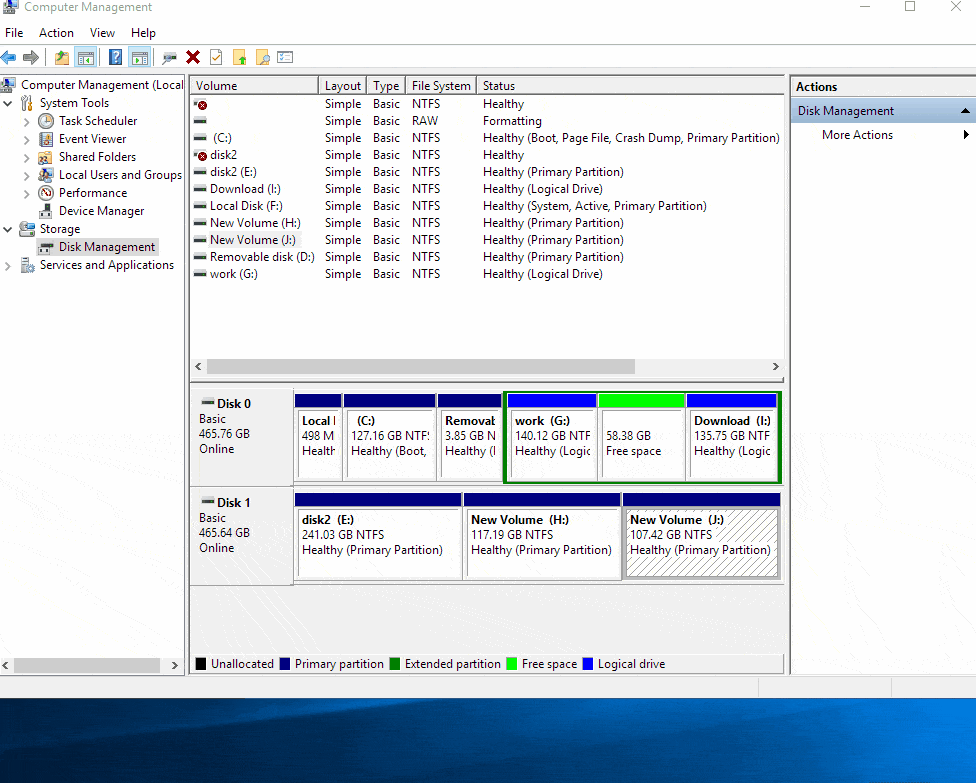
You'll miss the ability to resize the partitions without losing data, and the ability to create a new partition without having to delete the existing one, and the ability to extend the system partition to use the free space on the other drive, and the ability to move the system partition to the other drive, and the ability to mirror the system partition on the other drive, and the ability to convert the system partition to a dynamic disk, and the ability to convert the other drive to a dynamic disk, and the ability to convert the system partition to a basic disk.
- A total data loss while deleting a volume.
- A fixed region for the unallocated space is required, which must be placed on the right side of the target partition that will have its storage size modified.
Merge Non-adjacent Partitions in Windows 11/10 with Qiling Partition Software
Third-Qiling Partition Master is a software that complements the Disk Management tool, offering additional features for managing disks on Windows platforms. It provides functionalities such as migrating the operating system, resizing or moving partitions, wiping, hiding, and converting between different partition types, making it a valuable tool for disk management.
For users who want to merge non-adjacent partitions, there are three common conditions, and Qiling Partition Master can be applied in all cases. To do this, download and launch the software on your computer, and we will guide you through the detailed steps one by one.
#1 Case: Merge Two Non-adjacent Partitions with Unallocated Space

If you want to merge C drive and D drive, please follow these steps: 1. Right-click on "This PC" or "Computer" and select "Manage".
Step 1. Backup D drive with "File backup" option
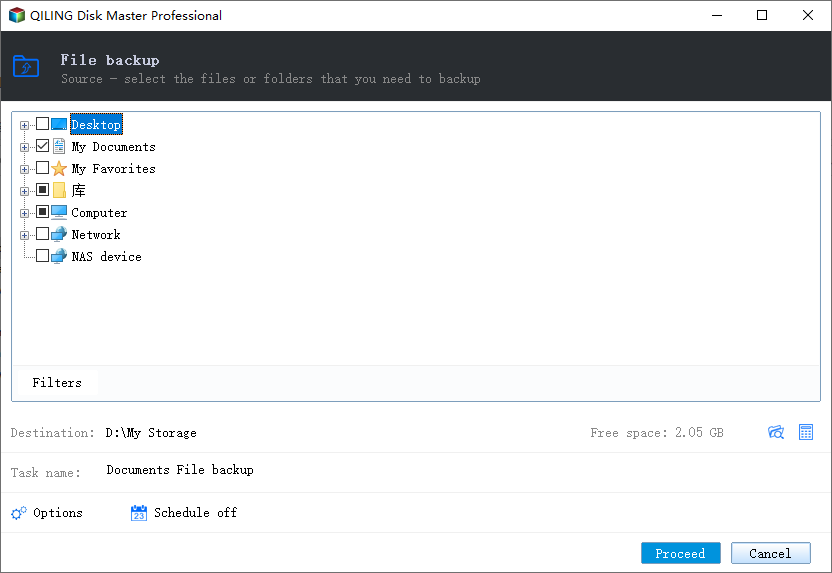
Step 2. Delete D drive
Step 3. Extend C drive
To extend the size of the C drive, select the C drive in the Disk Management page and choose "Resize/Move" from the options.
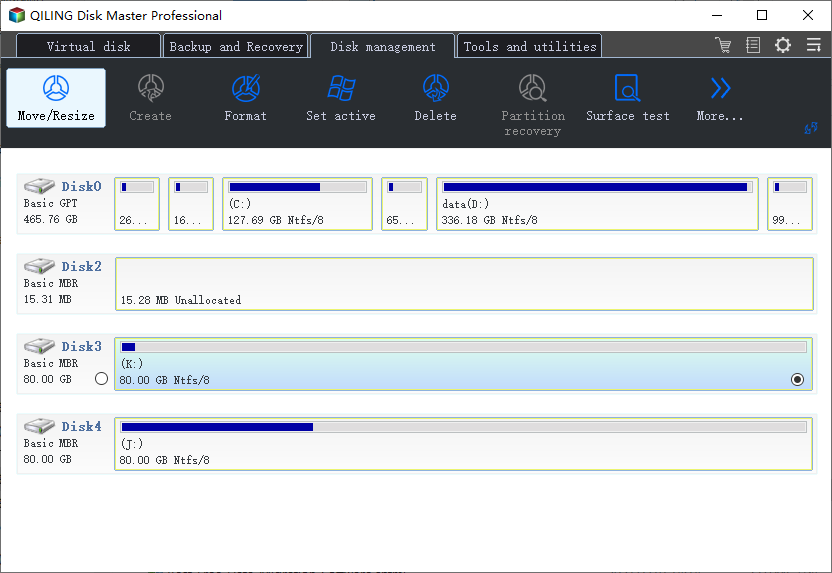
To extend the C drive, drag your mouse into the unallocated space and click "Proceed" to start resizing the partition.
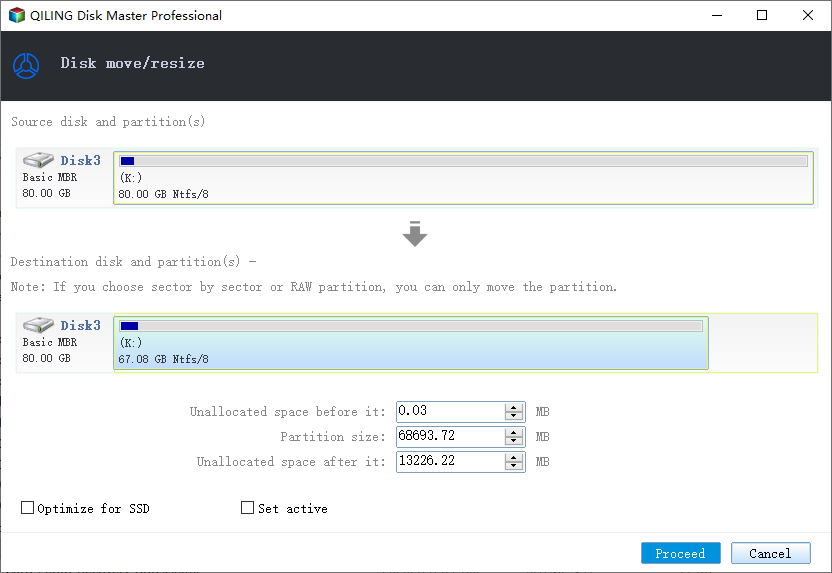
Step 4. Restore D drive to C drive with "file recovery"
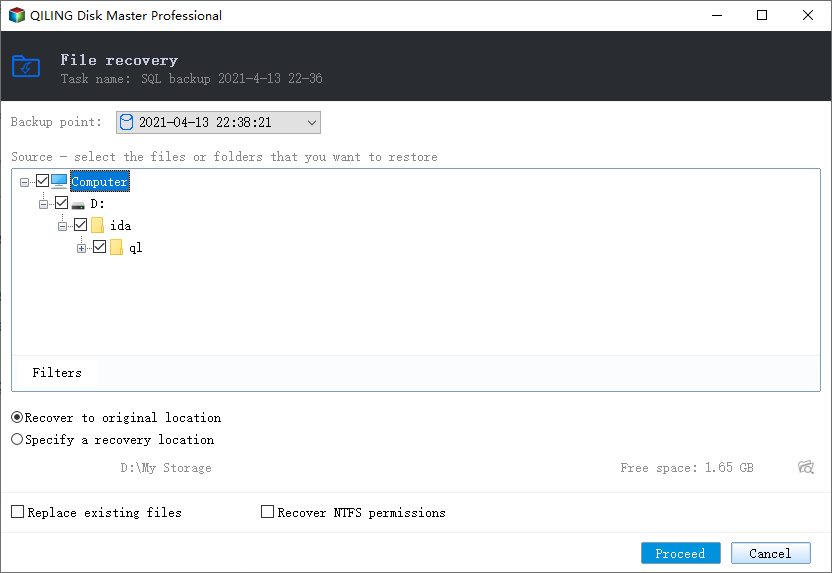
#2 Case: Only Merge the Free Space of the Resource Partition

To merge the C drive with the free space of the E drive, you would need to delete the E drive partition, extend the C drive partition to fill the newly freed space, and then recreate the E drive partition to its original size. This process involves using a disk management tool, such as Disk Management in Windows, and requires careful planning to avoid data loss.
Step 1. shrink E drive
Select the E drive you want to adjust its size and choose "Resize/Move" in the Disk Management page.

To shrink the E drive, you'll need to free up unallocated space by dragging one of its heads, then click "Proceed" to start resizing the partition.

Step 2. Extend C drive
To extend the C drive, select C drive and choose "Resize/Move" in the Disk management page.
To extend the C drive, drag the mouse into the unallocated space and click "Proceed" to resize the partition.
To combine partitions in Windows 11/10, you can use the built-in Disk Management tool. First, open the Disk Management tool by searching for it in the Start menu, or by pressing the Windows key + R to open the Run dialog box and typing "diskmgmt.
To merge non-adjacent partitions, download the software and follow the guide below. The guide will walk you through the steps to merge the partitions.
What else can Qiling Partition Master do for you?
After a long scroll of this tutorial, you may find that Qiling Partition Master tends to take care of data more tenderly, as well tries to simplify the complete process more intelligently. Other than merging non-adjacent partitions in Windows 11/10, it also addresses concerns about partitioning, formatting, and data recovery, making it a comprehensive tool for managing disk space.
How do I merge unallocated partitions to C drive?
To merge unallocated space to the C drive, click on the C drive, select "Resize/Move", and drag the mouse pointer to include all unallocated space, then click "Proceed".
Can I combine two unallocated spaces?
Combining two unallocated spaces in Qiling Partition Master is a straightforward process. You can use the "Resize/Move" feature to merge them, and the outcome depends on whether the unallocated spaces are aligned, continuous, or not.
How to merge partitions on two hard disks
To join two or three drives as one, you can use the built-in Disk Management tool in Windows. For advanced users who want to merge a drive on disk 0 to a drive on disk 1, you can follow the detailed guide on the linked page. The standard operation involves creating a new volume, selecting the unallocated space on the second disk, and then assigning a drive letter to the new volume. This will effectively merge the two drives into one. Note that this process may require some technical expertise and caution should be exercised to avoid data loss.
1. If the current hard drive status is Basic, convert it to Dynamic disk. (This information is visible in the software interface)
2. The drive on one disk should be located and merged with the other. This will combine the data from both disks into a single drive.
Related Articles
- Convert FAT32 to NTFS Without Losing Data
- How to Clone IDE to SATA HDD/SSD (2 Ways)
- 3+ Solutions: Solve C Drive Is Full and Out of Space in Windows 11/10/8/7
- [Easy to Go] How to Change Partition Type ID in Windows 10/8/7 Computer and Laptop
- How to Clone WD SSD on Windows 10/11 [Full Guide]
- How to Erase and Format CD or DVD in Windows 10/11